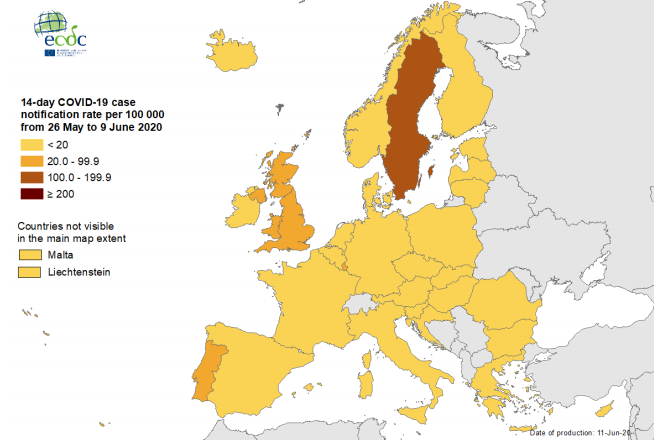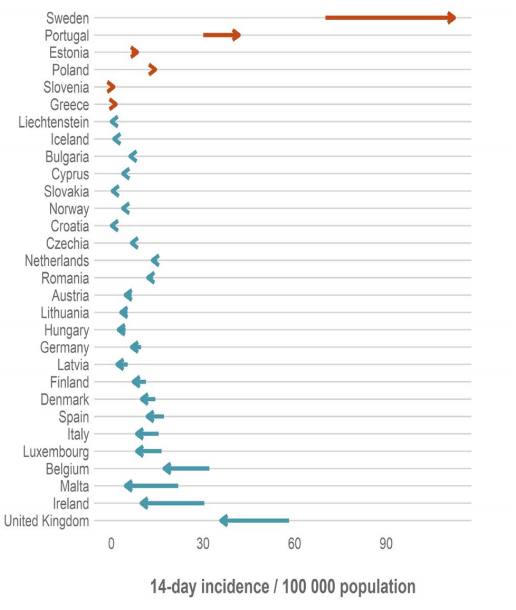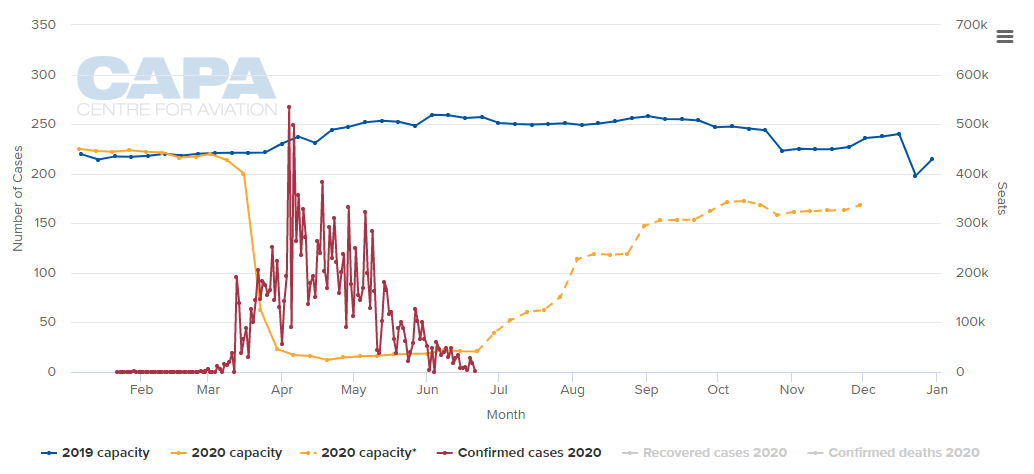MAP - Reported Covid-19 cases per 100,000 population in EU/EEA countries and the UK, 26-May-2020 to 09-Jun-2020 Source: European Centre for Disease Prevention and Control
Source: European Centre for Disease Prevention and Control
These figures, proposals and targets show what a European Union (EU) travel bubble may start to look like in the coming months, and also gives some indication of what external Schengen countries need to work towards to once again be eligible for free (and safe) movement in the EU.
According to the Finnish government, at current rates of infection, this would make citizens from Austria, Croatia, Cyprus, Ireland, Italy, Germany, Greece, Hungary, Liechtenstein, Slovakia, Slovenia and Switzerland eligible to enter Finland without undergoing quarantine.
It would however exclude Sweden, whose infection rate is over 100 cases per 100,000 inhabitants and still trending upwards, according to the European Centre for Disease Prevention and Control's most recent risk assessment.
CHART - Trend in Covid-19 cases per 100,000 population, 26-May-2020 to 09-Jun-2020 Source: European Centre for Disease Prevention and Control
Source: European Centre for Disease Prevention and Control
Statistically speaking, it would also exclude the UK for now, though the country's reported transmission rate is trending downwards. Indeed, since late May-2020, the UK's daily case rate has continued to drop from 2000 to below 1000 in the past few days.
Despite Schengen borders reopening on 15-Jun-2020, most EU nations have taken a somewhat ad hoc approach to easing of borders and movement restrictions and removal of quarantines. Some nations, for example the Baltic states Lithuania, Estonia and Latvia, have already formed travel corridors, allowing each other's citizens to travel between them without Covid-19 quarantine conditions. Others, such as between Germany and the Balearic island of Mallorca in Spain, have trialled limited tourism flows exempt from quarantine restrictions ahead of the reopening of international borders from 01-Jul-2020.
These quarantine measures have already been lifted by Finland for those travelling from the Baltics, highlighting the country's balancing act between biosecurity and restarting its economy and tourism industries.
GRAPH - Finnish international seats as of week commencing 22-Jun-2020. Same cliff-face traffic drop in Mar-2020, but not the same extended U-shape recovery pattern that the likes of France or Germany are registering into late summer 2020 Source: CAPA - Centre for Aviation and OAG
Source: CAPA - Centre for Aviation and OAG
In terms of air capacity in Finland's case, there is a noticeable difference in the shape of recovery compared to other EU markets.
The reduction is partly explained by the fact that the country is not necessarily an inbound European tourism market in summer season, though not the extend that is shown above. Even capacity heading into winter 2020/21 is currently lagging considerably behind 2019 levels, unlike France or Germany. This underscores Finland's enthusiasm to push for a clear and concise EU travel zone in the context of Covid-19 as soon as possible, to ensure that even if summer is a write off, tourism can rebound in the winter.
Airline schedules of course are subject to constant change and will be particularly sensitive to a potential second wave of infections and renewed lockdowns in Europe. And though reported statistics show a decreasing trend in daily cases in Europe, the easing of internal restrictions already undertaken by certain countries, coupled with the reopening of borders, will no doubt trigger a new spike in infections in the coming weeks.
Countries like Finland don't not want to miss out on being a part of an EU travel bubble, but nor do they want that bubble to burst.